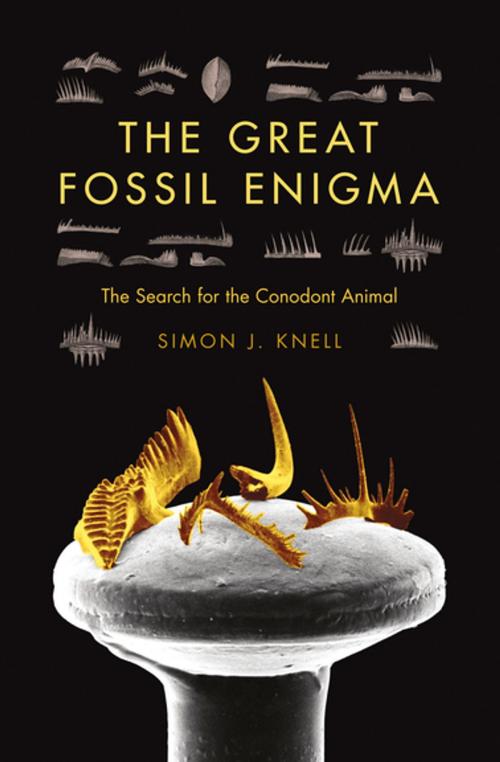The Great Fossil Enigma
The Search for the Conodont Animal
Nonfiction, Science & Nature, Science, Earth Sciences, Palaeontology, Other Sciences, History| Author: | Simon J. Knell | ISBN: | 9780253006066 |
| Publisher: | Indiana University Press | Publication: | November 6, 2012 |
| Imprint: | Indiana University Press | Language: | English |
| Author: | Simon J. Knell |
| ISBN: | 9780253006066 |
| Publisher: | Indiana University Press |
| Publication: | November 6, 2012 |
| Imprint: | Indiana University Press |
| Language: | English |
A fascinating, comprehensive, accessible account of conodont fossils—one of paleontology’s greatest mysteries: “Deserves to be widely read and enjoyed” (Priscum).
Stephen Jay Gould borrowed from Winston Churchill when he described the eel-like conodont animal as a riddle wrapped in a mystery inside an enigma. The search for its identity confounded scientists for more than a century. Some thought it a slug, others a fish, a worm, a plant, even a primitive ancestor of ourselves. As the list of possibilities grew, an answer to the riddle never seemed any nearer. Would the animal that left behind the miniscule fossils known as conodonts ever be identified? Three times the creature was found, but each was quite different from the others. Were any of them really the one?
Simon J. Knell takes the reader on a journey through 150 years of scientific thinking, imagining, and arguing. Slowly the animal begins to reveal traces of itself: its lifestyle, its remarkable evolution, its witnessing of great catastrophes, its movements over the surface of the planet, and finally its anatomy. Today the conodont animal remains perhaps the most disputed creature in the zoological world.
A fascinating, comprehensive, accessible account of conodont fossils—one of paleontology’s greatest mysteries: “Deserves to be widely read and enjoyed” (Priscum).
Stephen Jay Gould borrowed from Winston Churchill when he described the eel-like conodont animal as a riddle wrapped in a mystery inside an enigma. The search for its identity confounded scientists for more than a century. Some thought it a slug, others a fish, a worm, a plant, even a primitive ancestor of ourselves. As the list of possibilities grew, an answer to the riddle never seemed any nearer. Would the animal that left behind the miniscule fossils known as conodonts ever be identified? Three times the creature was found, but each was quite different from the others. Were any of them really the one?
Simon J. Knell takes the reader on a journey through 150 years of scientific thinking, imagining, and arguing. Slowly the animal begins to reveal traces of itself: its lifestyle, its remarkable evolution, its witnessing of great catastrophes, its movements over the surface of the planet, and finally its anatomy. Today the conodont animal remains perhaps the most disputed creature in the zoological world.















